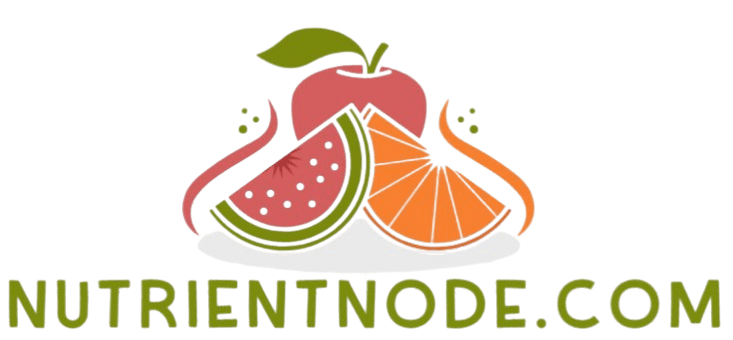The Best Resources for Understanding Dietary Guidelines
Navigating the realm of dietary guidelines may seem overwhelming, but grasping their nuances is essential for making informed food choices.
This article distills everything you need to know, from the pivotal role of government agencies in establishing these guidelines to the fundamental components that define healthy eating.
You ll discover how dietary recommendations vary across countries, debunk common myths, and appreciate the significance of incorporating cultural preferences into your diet.
Whether you’re meticulously planning your meals or simply seeking to expand your nutritional knowledge, this guide provides valuable insights to elevate your understanding and foster better health.
Contents
- Key Takeaways:
- 1. What Are Dietary Guidelines and Why Are They Important?
- 2. Government Agencies Involved in Setting Dietary Guidelines
- 3. How Often Are Dietary Guidelines Updated?
- 4. Key Components of Dietary Guidelines
- 5. Understanding the Food Groups
- 6. Major Nutrient Recommendations
- 7. How to Use the Dietary Guidelines in Meal Planning
- 8. Common Misconceptions About Dietary Guidelines
- 9. How Do Dietary Guidelines Differ Across Different Countries?
- 10. The Role of Healthcare Professionals in Promoting Dietary Guidelines
- 11. Resources for Tracking and Monitoring Dietary Intake
- 12. Incorporating Cultural and Personal Preferences into Dietary Guidelines
- 13. Addressing Controversies Surrounding Dietary Guidelines
- 14. The Impact of Dietary Guidelines on Public Health
- 15. Future Directions and Potential Changes in Dietary Guidelines
- Frequently Asked Questions
- What are dietary guidelines?
- What are dietary guidelines?
- Why is it important to understand dietary guidelines?
- What are the best resources for understanding dietary guidelines?
- Are there any interactive resources available for understanding dietary guidelines?
- Can I consult a healthcare professional for help in understanding dietary guidelines?
- Do dietary guidelines change over time?
Key Takeaways:

Dietary guidelines are important for promoting healthy eating habits and preventing chronic diseases. Government agencies, such as the USDA and HHS, play a key role in setting and updating dietary guidelines.
Understanding the food groups, the main nutrients your body needs, like proteins, fats, and carbohydrates, and using dietary guidelines in meal planning can help individuals make informed choices about their diet.
Let s dive into how these guidelines can transform your eating habits!
1. What Are Dietary Guidelines and Why Are They Important?
The Dietary Guidelines for Americans serve as a key part in promoting health and preventing disease, offering you evidence-based dietary recommendations tailored to meet your nutrient needs from babies to older adults.
These guidelines empower you to make informed choices about healthy eating patterns and provide useful tools, such as the MyPlate App, to help optimize your dietary habits.
By influencing public health policies, these guidelines play a critical role in tackling nutrition-related challenges on a national scale. Agencies like the USDA and HHS work hand-in-hand to ensure that these guidelines are scientifically sound and accessible to everyone in the community.
Through a variety of platforms including educational workshops, online resources, and community programs this information is widely shared, enabling you to seamlessly integrate these principles into your daily routine.
Together, we can build a healthier society, emphasizing the vital role of nutrition in preventing chronic diseases and enhancing overall well-being.
2. Government Agencies Involved in Setting Dietary Guidelines
The creation of the Dietary Guidelines for Americans is a collaborative endeavor, primarily spearheaded by key government agencies like the USDA and HHS. These agencies are committed to ensuring that federal nutrition recommendations are not only scientifically sound but also accessible to you and the public at large.
They play essential roles in conducting thorough research and analyzing emerging health data to shape their guidelines effectively. While the USDA concentrates on agricultural practices and food availability, HHS prioritizes public health initiatives that inspire better dietary choices across the nation.
By working hand-in-hand with health professionals, nutritionists, and community organizations, they ensure that these guidelines reflect current scientific understanding while resonating with diverse populations.
This partnership enables comprehensive public outreach and educational campaigns that encourage you and your family to embrace healthier eating habits, ultimately enhancing the well-being of your community.
3. How Often Are Dietary Guidelines Updated?
The Dietary Guidelines are carefully reviewed and updated roughly every five years, ensuring they capture the latest insights from nutrition science while remaining effective in promoting health and preventing disease.
Throughout this process, a wide range of scientific research is scrutinized, encompassing studies on dietary patterns, nutrient intake, and health outcomes. Feedback from the public is also sought, inviting individuals and stakeholders to engage in meaningful discussions.
This collaborative approach aids in pinpointing emerging health trends and challenges, making it crucial to weave new evidence into the guidelines.
By adapting to these evolving factors, the recommendations transform to address the dynamic needs of the population, underscoring the significance of a comprehensive approach to nutrition and health that aligns with shifting lifestyles and dietary preferences.
Start applying these guidelines today for a healthier tomorrow!
4. Key Components of Dietary Guidelines
Key components of the Dietary Guidelines include a range of recommendations designed to cultivate healthy eating habits. These guidelines pinpoint food sources brimming with essential nutrients and establish patterns that help prevent chronic diseases while enhancing overall wellness.
The focus lies on incorporating a diverse array of foods, particularly fruits and vegetables. These foods are rich in vitamins, minerals, and antioxidants that support your immune system. Whole grains provide essential fiber that aids digestion and helps keep your blood sugar levels steady.
Lean proteins such as poultry, fish, beans, and legumes are crucial for muscle repair and overall bodily function.
When combined, these elements create a comprehensive approach to nutrition. This ensures your body receives the balanced energy and nutrients it needs to thrive. This supports your well-being and significantly reduces the risk of obesity, heart disease, and other health concerns.
5. Understanding the Food Groups
Understanding the various food groups fruits, vegetables, proteins, grains, and dairy is essential for implementing the Dietary Guidelines. This helps you achieve a balanced diet that meets your individual nutrient needs.
By recognizing the unique contributions of each food group, you can make informed choices that enhance your overall well-being. For instance, fruits are packed with vitamins and antioxidants, while vegetables offer essential minerals and dietary fiber crucial for digestive health.
Protein sources like lean meats, legumes, and nuts play a vital role in supporting muscle growth and tissue repair. Whole grains provide complex carbohydrates for sustained energy, and dairy products offer calcium and vitamin D, key for maintaining strong bones.
To seamlessly integrate these groups into your daily meals, add a variety of colorful fruits and veggies to your salads. Opt for whole-grain choices like brown rice or quinoa, and select low-fat dairy alternatives. This way, you ensure each meal is both nourishing and balanced.
6. Major Nutrient Recommendations
Major nutrient recommendations outline the ideal proportions of carbohydrates, proteins, and fats necessary for maintaining nutritional balance and supporting your overall health. Understanding these ratios helps you create meals that satisfy your hunger while enhancing your body s performance.
Aim for about 45-65% of your daily calories from carbohydrates, 10-35% from proteins, and 20-35% from fats. Each of these nutrients serves a critical function. Carbohydrates are your body’s primary energy source, proteins are vital for muscle repair and growth, and healthy fats support cell function and hormone production.
To achieve this balance, incorporate a variety of food sources:
- For carbohydrates, consider whole grains like quinoa and brown rice.
For protein, think about:
- Lean meats such as chicken.
- Plant-based options like lentils.
To meet your fat requirements, include:
- Avocados.
- Nuts.
- Olive oil in your meals.
7. How to Use the Dietary Guidelines in Meal Planning

Using the Dietary Guidelines helps you make informed food choices. Tools like the MyPlate App can guide you in aligning your meals with these vital nutrition recommendations.
Start by assessing your daily needs based on your age, gender, and activity level. Then, construct balanced meals that encompass a variety of food groups. Ensure your plate is a vibrant mix of fruits, vegetables, whole grains, lean proteins, and healthy fats.
Remember, portion control is key. Using measuring tools can help maintain appropriate serving sizes. Embrace nutrition education through resources, workshops, or cooking classes. This will empower you to make healthier choices while discovering new ingredients and recipes.
8. Common Misconceptions About Dietary Guidelines
Despite their significance, you may encounter several common misconceptions about the Dietary Guidelines that can cloud your understanding of healthy eating and nutrition practices. To clear up these misunderstandings, resources like understanding dietary guidelines can help remove hurdles for anyone striving to embrace a healthier lifestyle, leaving you feeling informed about what true nutrition entails.
For instance, many believe that healthy eating means strict dieting, which can lead to an unhealthy relationship with food. Nutrition educators emphasize that understanding the guidelines can help you create balanced meals that enhance your overall well-being, rather than fixating on calorie counting or eliminating entire food groups.
Let s bust these myths and take control of our nutrition! It s crucial to dispel these misconceptions so you can empower yourself to make informed choices that support long-term health.
9. How Do Dietary Guidelines Differ Across Different Countries?
Dietary guidelines vary widely from one country to another, reflecting cultural differences, health priorities, and nutritional research that shape local approaches to healthy eating.
Take the Mediterranean diet, for example. It emphasizes whole grains, fruits, and healthy fats, beautifully aligning with the culinary traditions of Southern Europe.
In contrast, Japan’s guidelines prioritize a balanced intake of rice, fish, and vegetables, aiming to promote longevity through foods that are high in nutrients and low in calories. Meanwhile, the United States adopts a more flexible stance, encouraging a variety of food choices while emphasizing the importance of reducing added sugars and saturated fats to combat the rising issue of obesity.
Each country’s nutritional framework is thoughtfully tailored to its unique context, ensuring that dietary recommendations resonate with the local population and ultimately enhance their health outcomes.
10. The Role of Healthcare Professionals in Promoting Dietary Guidelines
Healthcare professionals play a vital role in promoting Dietary Guidelines, using their expertise to educate you and the wider community about nutrition science and healthy eating patterns that can effectively prevent chronic diseases and enhance overall health.
By providing personalized counseling sessions, they can directly address your specific needs, helping you navigate dietary challenges and build sustainable habits that fit your lifestyle.
Engaging with community programs is another important way they promote healthy eating. These initiatives, like cooking classes, community gardens, and health fairs, raise awareness about nutrition and create healthier environments.
Their collaboration with public health initiatives is equally essential. This allows them to contribute to comprehensive strategies aimed at improving population health.
Through these partnerships, they can help design impactful interventions that tackle food deserts, enhance access to nutritious foods, and establish supportive policies that encourage healthier lifestyle choices for everyone.
11. Resources for Tracking and Monitoring Dietary Intake
Utilizing resources for tracking and monitoring your dietary intake can significantly empower you to adhere to the Dietary Guidelines with confidence. Tools like the MyPlate App offer invaluable insights into nutrition science and food choices, helping you navigate your dietary journey effectively.
If you prefer a more traditional approach, a variety of print resources, such as food journals and nutritional handbooks, can serve as excellent companions. These tools enable you to log your daily meals, assess portion sizes, and systematically review your eating habits.
By monitoring your intake, you foster accountability and make it easier to pinpoint patterns that might lead to less-than-healthy choices. Engaging with these resources enhances your awareness of food selections, ultimately promoting adherence to healthy eating practices and supporting your long-term dietary goals.
Start using these tools today to supercharge your healthy eating journey!
12. Incorporating Cultural and Personal Preferences into Dietary Guidelines
Incorporating your cultural and personal preferences into the Dietary Guidelines is crucial. This makes them relevant and accessible for you.
This flexibility acknowledges that food transcends mere nutrition; it embodies community, tradition, and identity. For instance, you can weave Mediterranean elements like hummus and whole grain pita bread into your diet if you cherish Middle Eastern flavors.
Integrating traditional Asian dishes, such as stir-fried vegetables and brown rice, offers you vibrant and nutritious options. Personalized nutrition enables you to customize dietary plans that align with your lifestyle, enhancing your commitment to them.
When you see your cultural foods represented in a balanced diet, you re more likely to stay committed to healthier eating habits, fostering your long-term wellness.
13. Addressing Controversies Surrounding Dietary Guidelines
Controversies surrounding the Dietary Guidelines often stem from varying interpretations of nutrition science. This ignites debates among health professionals and the public regarding the validity and application of these recommendations.
These discussions often focus on the right balance of carbs, proteins, and fats. This leads to differing opinions on what works best.
Some nutrition experts advocate for higher carbohydrate intake, while others promote low-carb or ketogenic approaches, each touting their potential health benefits.
The decision about food sources whether to prioritize whole foods, organic produce, or processed alternatives adds another layer of complexity to the conversation.
Health claims linked to various diets can spark skepticism, prompting individuals to question what truly works.
By consulting experts in the field of nutrition, you can untangle intricate issues. This nurtures a more informed and balanced dialogue that embraces diverse perspectives.
14. The Impact of Dietary Guidelines on Public Health

The impact of Dietary Guidelines on public health is profound. They inform policies and empower you to make healthier choices that can prevent chronic diseases and enhance your overall well-being.
These guidelines empower you to fight the alarming rise in obesity rates, which, according to the CDC, affected over 42% of adults in the United States as of 2020.
When you adhere to these guidelines, you play a crucial role in reducing the prevalence of chronic conditions such as diabetes and cardiovascular disease, which claim millions of lives each year.
Case studies in diverse communities reveal that implementing educational programs centered around these dietary recommendations leads to impressive improvements in nutrition-related health outcomes.
For example, cities that have launched initiatives promoting plant-based diets have seen lower hospitalization rates due to diet-related illnesses. This underscores the transformative power of informed dietary choices for collective health.
15. Future Directions and Potential Changes in Dietary Guidelines
As nutrition science evolves and new health trends emerge, future Dietary Guidelines will adapt to address contemporary dietary habits and rising concerns about foodborne viruses and chronic diseases.
Experts suggest that integrating findings from ongoing research will benefit you with more personalized dietary recommendations tailored to diverse populations. Recent studies underscore the importance of gut health and microbiomes in managing chronic diseases. This insight prompts a reevaluation of food choices to improve nutritional balance.
Incorporating knowledge about plant-based diets and sustainability will shape new guidelines, reflecting society’s growing emphasis on healthful eating and environmental responsibility. Such transformations aim to enhance individual well-being and promote community health in the face of global nutritional challenges.
Frequently Asked Questions
What are dietary guidelines?
Dietary guidelines are science-based recommendations that help individuals make healthier food choices.
What are dietary guidelines?
Dietary guidelines are evidence-based recommendations for a healthy diet. They help individuals make informed food choices for optimal health.
Why is it important to understand dietary guidelines?
Understanding dietary guidelines helps individuals make informed food choices. This leads to a balanced and healthy diet.
It can also prevent chronic diseases and support overall well-being.
What are the best resources for understanding dietary guidelines?
The best resources include official government websites, like the US Department of Health and Human Services. Reputable health organizations like the American Heart Association also provide valuable information.
Are there any interactive resources available for understanding dietary guidelines?
Absolutely! You’ll find a wealth of interactive resources, such as online quizzes and videos, that make learning about dietary guidelines fun and engaging.
Can I consult a healthcare professional for help in understanding dietary guidelines?
Yes! Registered dietitians and nutritionists can interpret dietary guidelines and provide personalized recommendations based on your health goals.
Do dietary guidelines change over time?
Yes, they are regularly reviewed and updated as new scientific evidence emerges. Regularly checking for updates ensures you follow the most accurate information.







